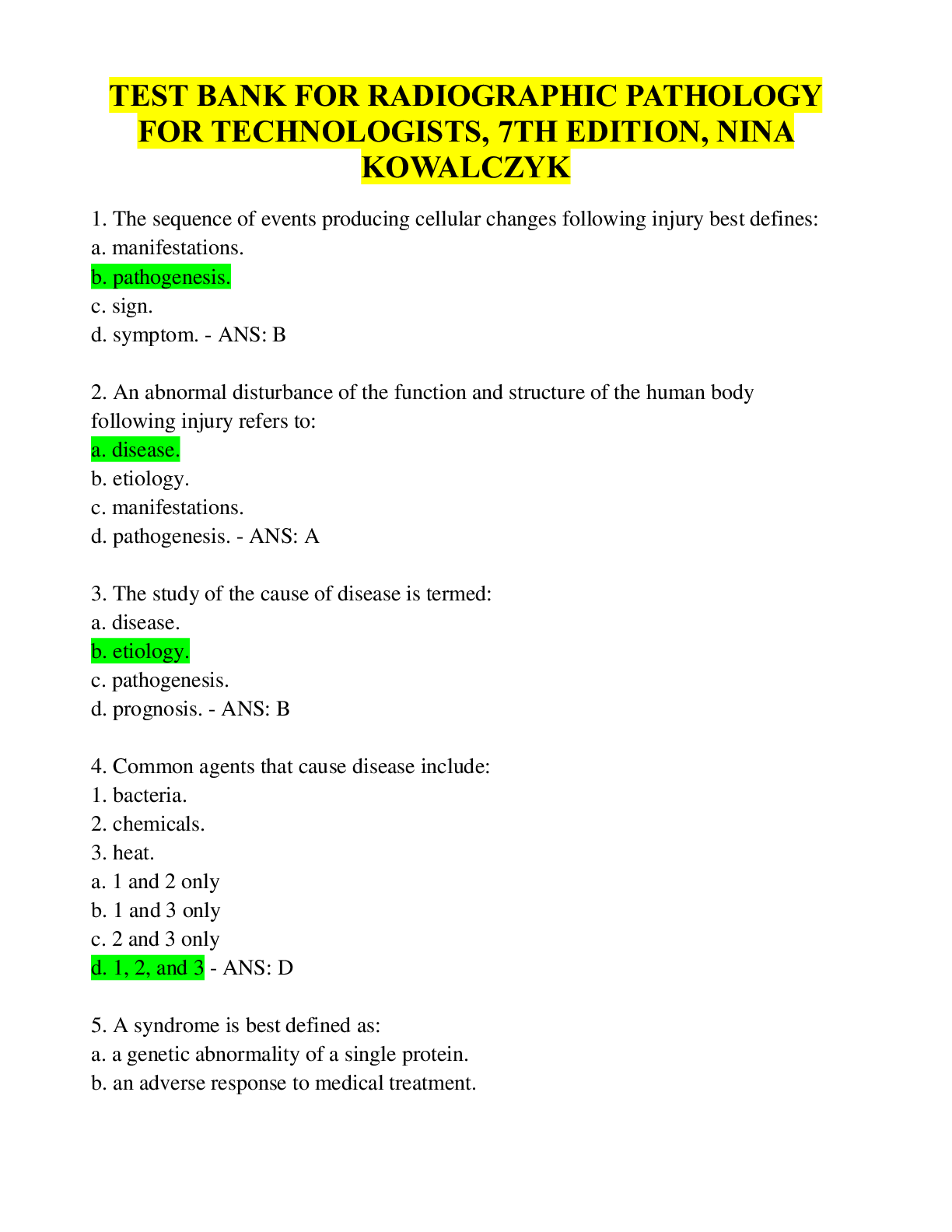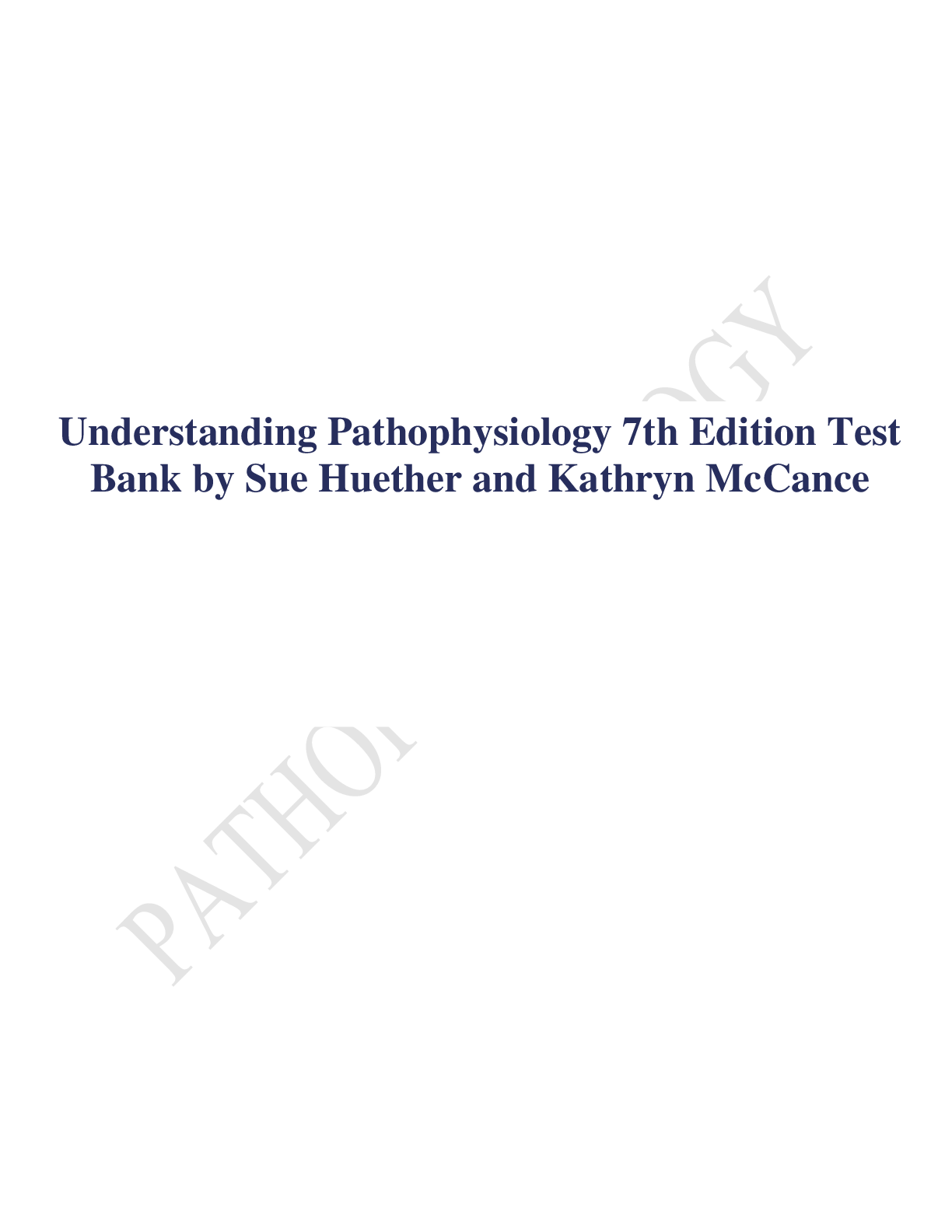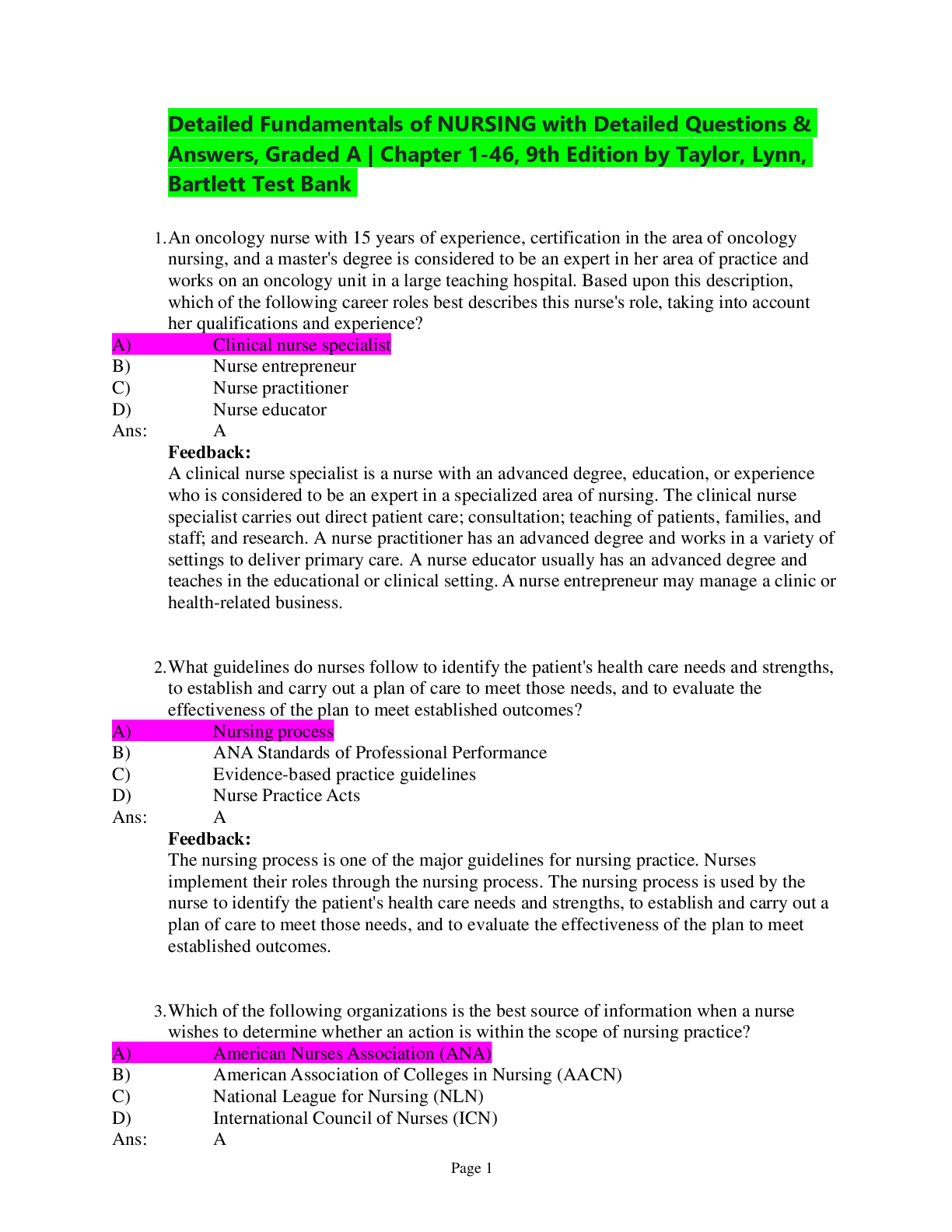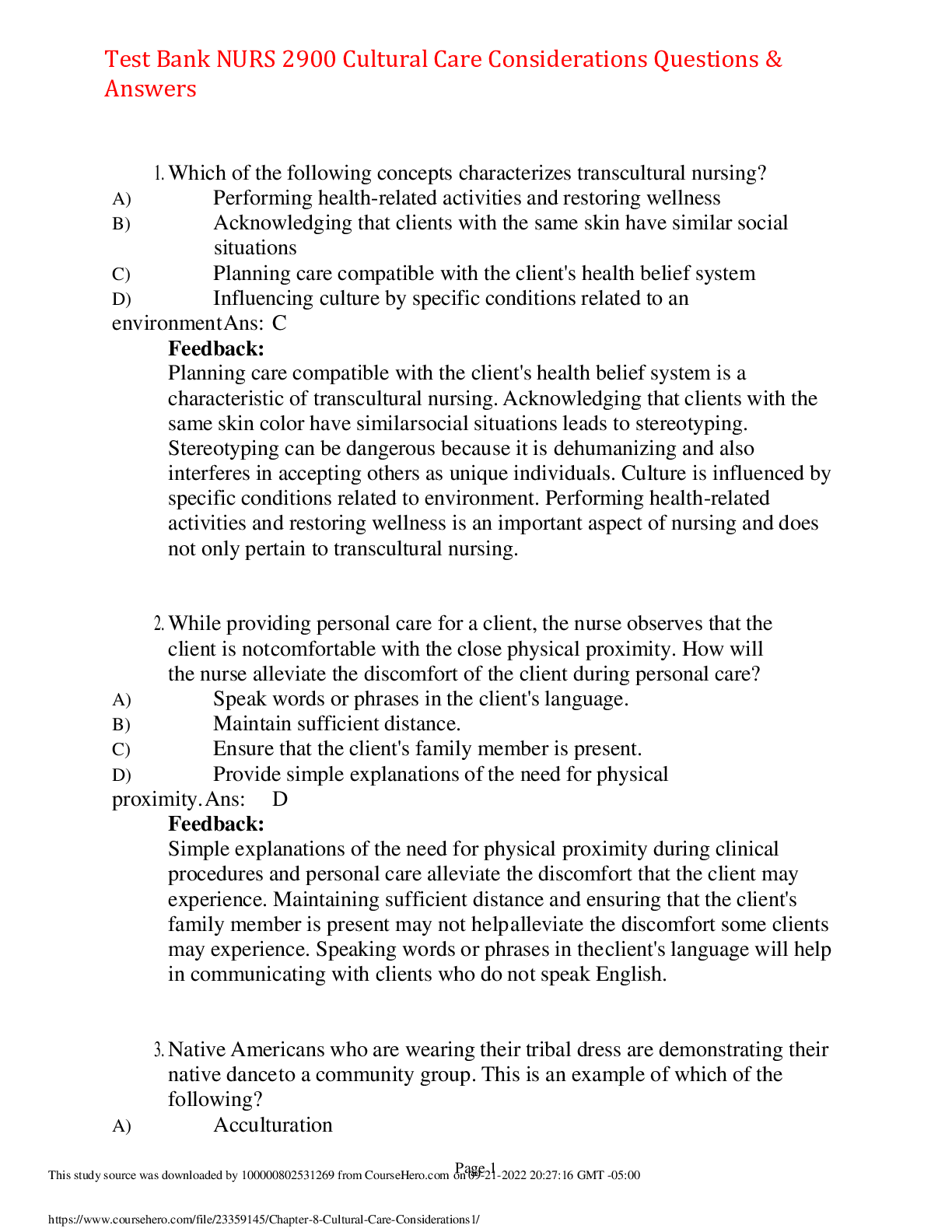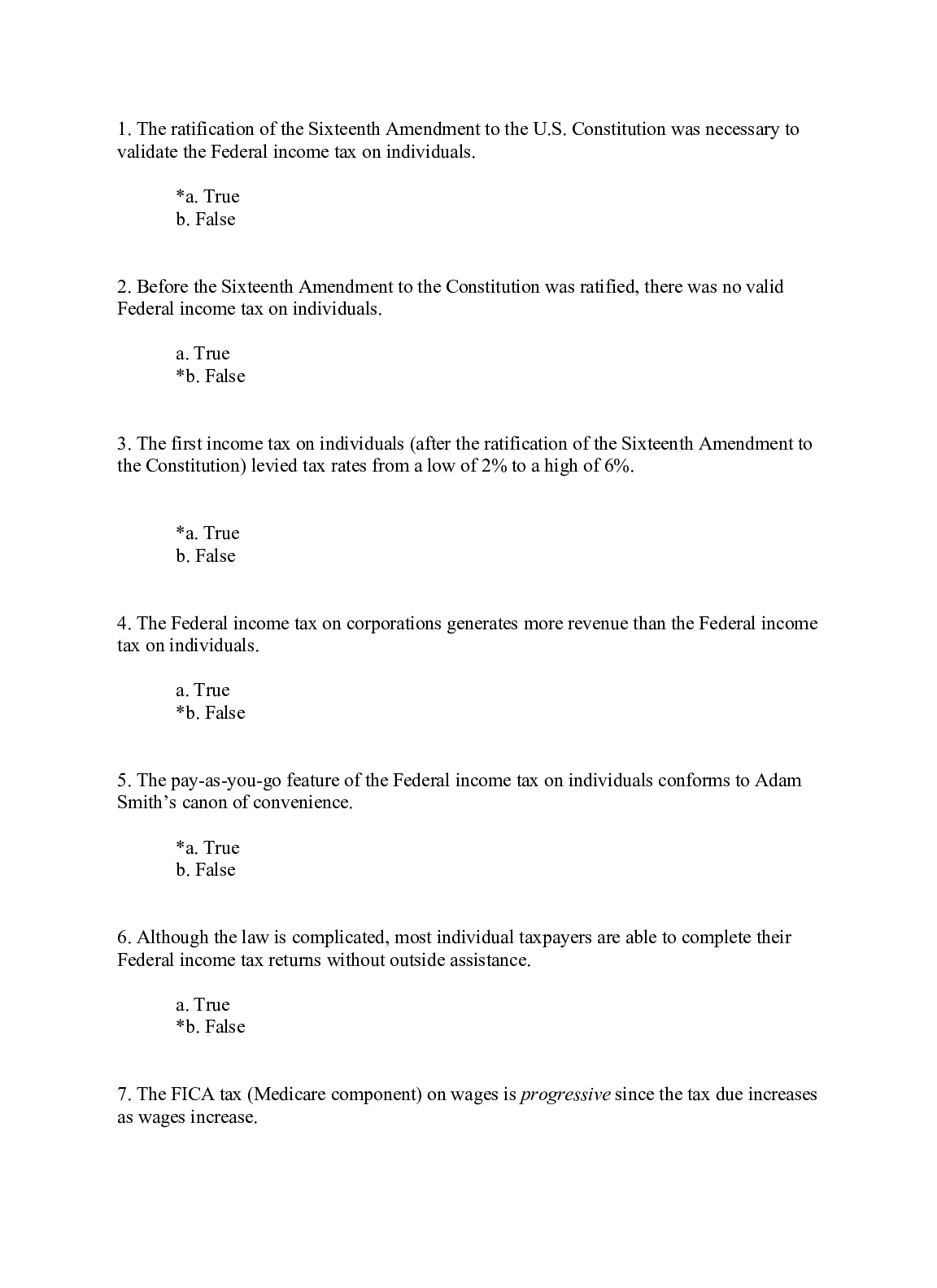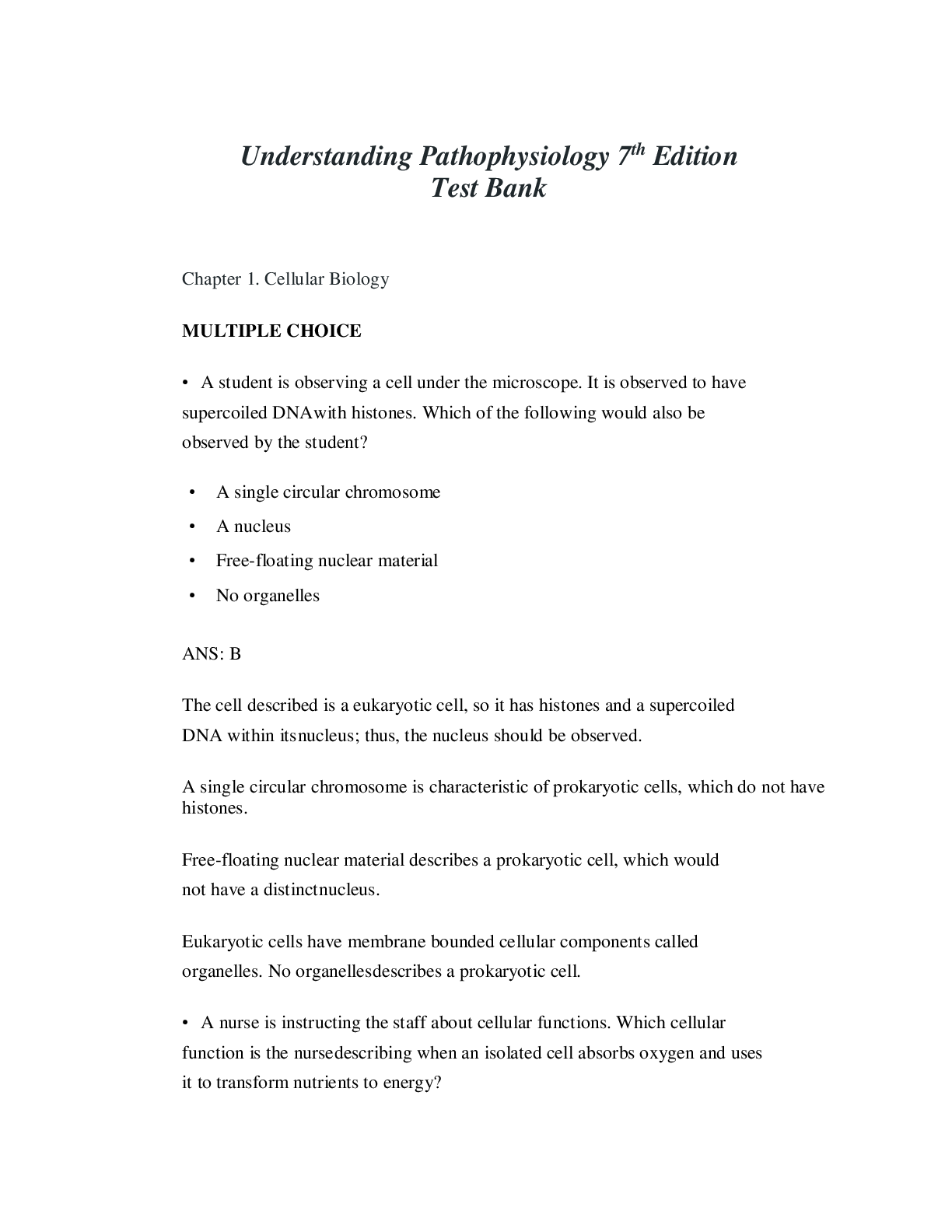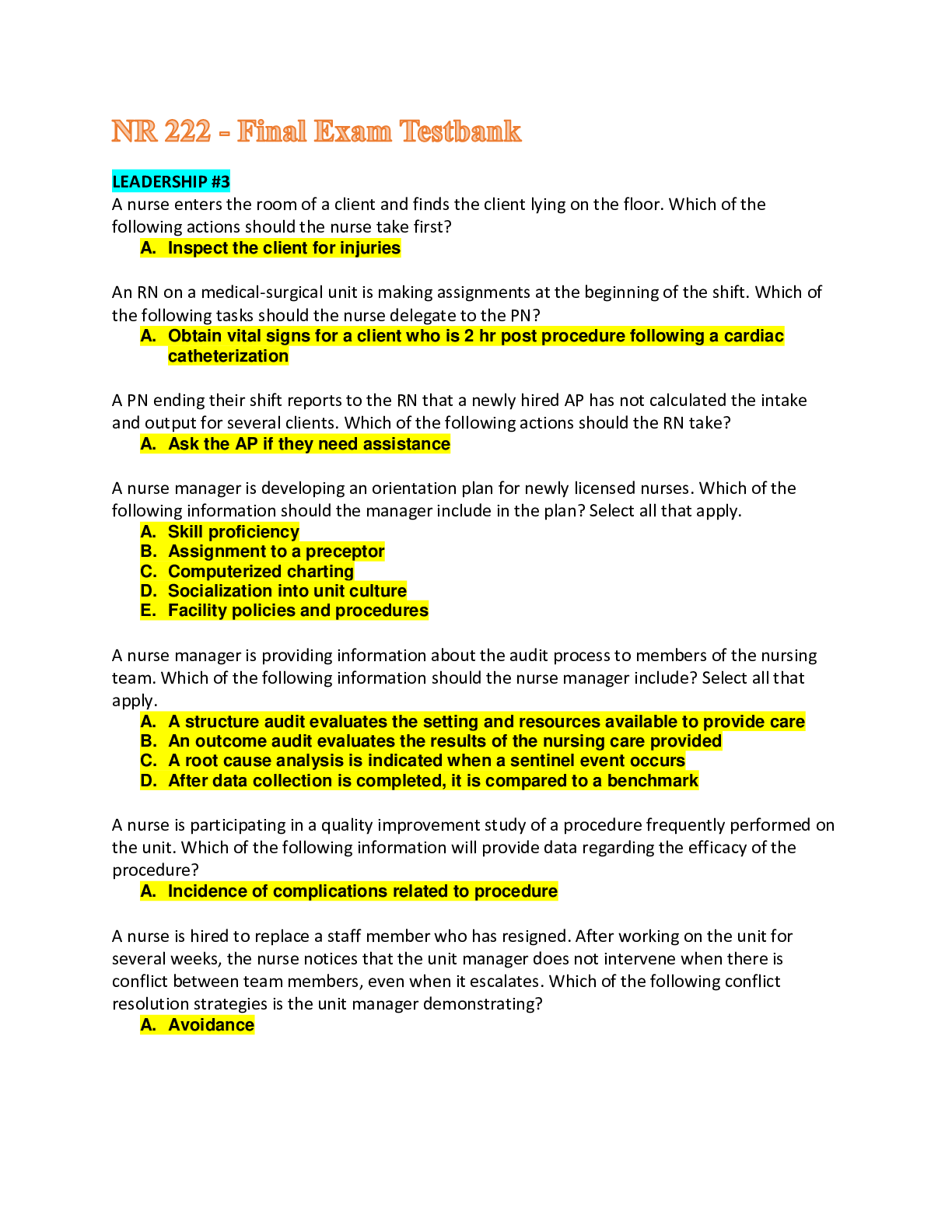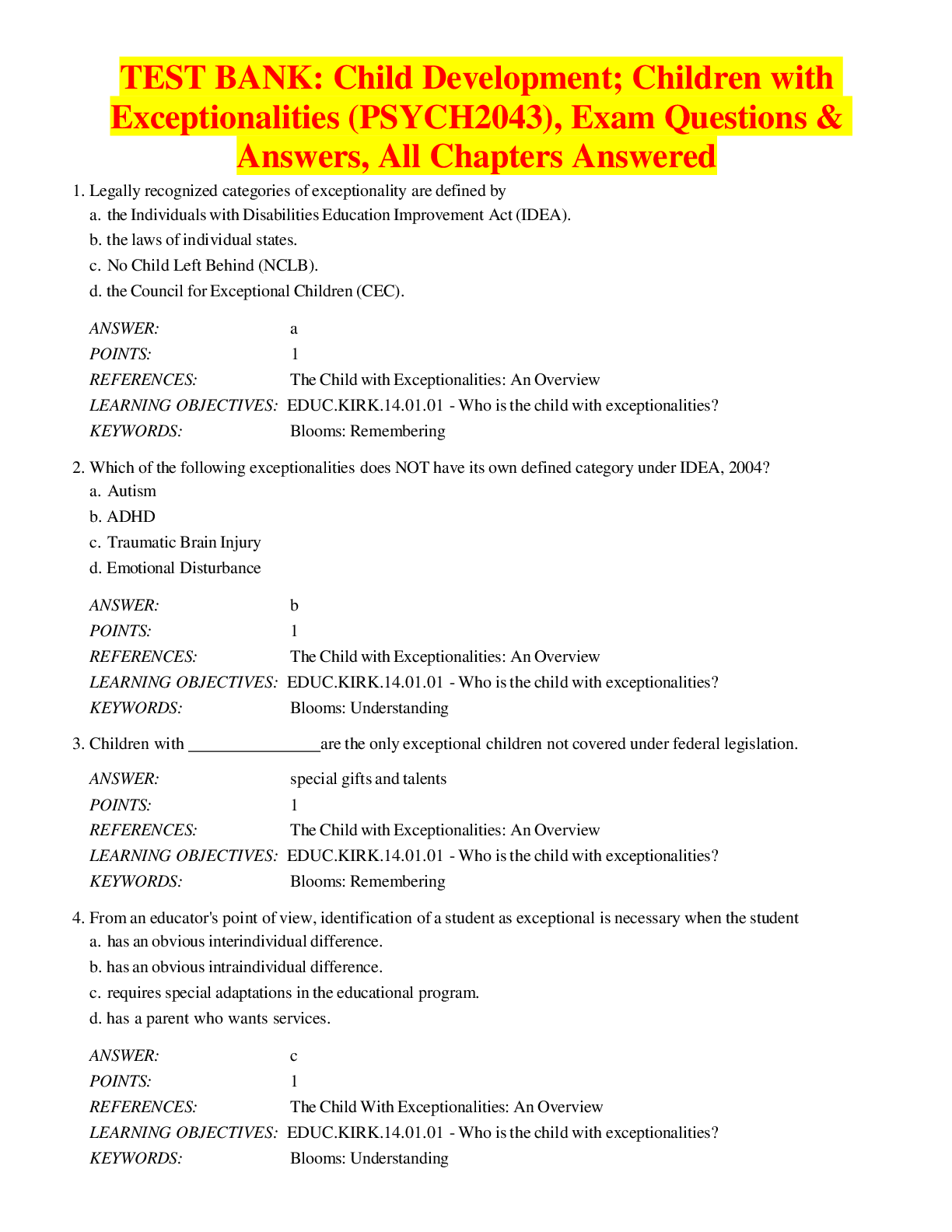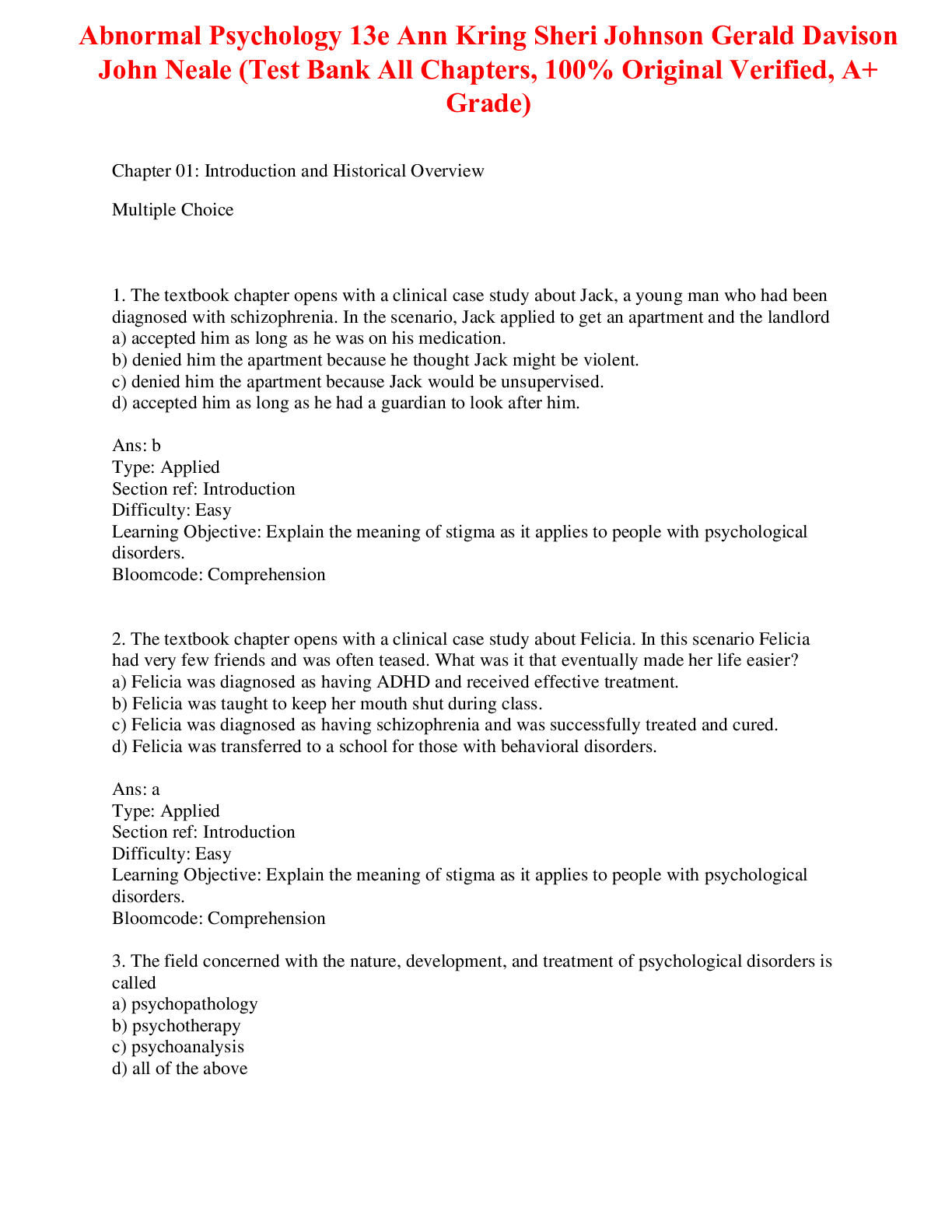*NURSING > TEST BANK > PHARMACOLOGY FINALS REVEW TESTBANK, UPDATED QUESTIONS & ANSWERS, DEEPLY EXPLAINED. (All)
PHARMACOLOGY FINALS REVEW TESTBANK, UPDATED QUESTIONS & ANSWERS, DEEPLY EXPLAINED.
Document Content and Description Below
PHARMACOLOGY FINALS REVEW TESTBANK, UPDATED QUESTIONS & ANSWERS, DEEPLY EXPLAINED.-1. The nurse provides teaching for a patient who will begin taking bosentan [Tracleer] for pulmonary arterial hyperte... nsion (PAH). Which statement by the patient indicates a need for further teaching about this medication? a. “I may take this medication with or without food.” b. “I may develop irreversible liver damage while taking this drug.” c. “I should not take cyclosporine while taking this medication.” d. “I will need to have lab tests every month while taking this drug.” ANS: B Liver injury may occur with bosentan but all cases to date have been reversible. The medication may be taken without regard to meals. Patients taking bosentan should not take cyclosporine concurrently. Patients will need to have liver enzymes measured monthly while taking the drug. 2. A patient with a history of heart disease develops pulmonary arterial hypertension (PAH), and the provider is considering prescribing sildenafil [Revatio]. The nurse caring for this patient will perform a careful drug history and notify the provider if the patient is taking which medication? a. A beta blocker b. A calcium channel blocker c. Nitroglycerin d. Warfarin ANS: C Patients taking sildenafil should not take nitroglycerin, since the combination can produce a life- threatening drop in blood pressure. Beta blockers, calcium channel blockers, and warfarin are not contraindicated with sildenafil. 3. A pregnant patient begins active labor at 30 weeks’ gestation. The provider orders dexamethasone 6 mg intramuscularly to be given twice daily for 4 doses. The patient asks the nurse what effect this drug will have on the fetus. The nurse will tell her that the dexamethasone is given to: a. improve cognitive function in the fetus. b. improve fetal neuromotor development. c. increase fetal weight and length. d. increase lung development in the fetus. ANS: D When preterm delivery cannot be prevented, injecting the pregnant patient with glucocorticoids can accelerate fetal lung maturation. Glucocorticoids do not improve cognitive function, neuromotor development, or physical size in the fetus. 4. A nurse counsels a patient who is to begin taking gamma-hydroxybutyrate [Xyrem] for narcolepsy. It is important for the nurse to warn the patient that respiratory depression is a potential risk with concomitant use of: a. alcohol. b. beta blockers. c. caffeine. d. nicotine. ANS: A The nurse should advise the patient to avoid alcohol when taking gamma-hydroxybutyrate, because combining the two increases the risk of respiratory depression. Gamma-hydroxybutyrate has no drug-to-drug interactions with beta blockers, caffeine, or nicotine. 5. A provider has told a parent that a 3-year-old child has a minor ear infection and that an antibiotic would be prescribed in a couple of days if the child’s symptoms worsened. The parent asks the nurse why the child cannot get an antibiotic today. Which response by the nurse is correct? a. “If the eardrum ruptures, we can culture the fluid to determine which antibiotic is best.” b. “Most ear infections are caused by viruses, so antibiotics are not effective.” c. “Most ear infections will resolve on their own without antibiotics.” d. “Your child will develop tolerance to antibiotics if they are prescribed too often.” ANS: C The vast majority of acute otitis media (AOM) episodes resolve without treatment, so unless the child is very ill, observation is the initial choice. Spontaneous rupture of the tympanic membrane can occur, but clinicians do not wait for it to happen to obtain a culture that will guide treatment. About 70% to 90% of AOM episodes are bacterial in origin. Patients do not develop tolerance to antibiotic effects; overuse of antibiotics can lead to resistant organisms. 6. A nurse is teaching a parent about the observation strategy for managing a 3-year-old child’s ear infection. Which statement by the parent indicates understanding of the teaching? a. “I should not give analgesics, because they may mask important symptoms.” b. “I will give ibuprofen or acetaminophen for pain or fever as needed.” c. “I will let my provider know if the symptoms are not better in 1 week.” d. “There is a slight risk of mastoiditis if antibiotic therapy is delayed.” ANS: B Observation is defined as management by symptomatic relief alone for 48 to 72 hours to allow time for AOM to resolve on its own. Parents should be taught to administer analgesics/antipyretics. Providing pain relief does not mask an important symptom. Parents should notify the provider if symptoms worsen or do not improve in 48 to 72 hours. There is no significant difference in the risk of developing mastoiditis. 7. An 18-month-old child is seen in the clinic with a temperature of 40°C. The child’s parents tell the nurse that the child developed the fever the previous evening and was inconsolable during the night. The provider examines the child and notes a bulging, erythematous tympanic membrane. The nurse will expect to: a. ask the parent to return to the clinic in 2 days to see whether antibiotics need to be started. b. discuss a referral to an ear, nose, and throat specialist for follow-up treatment. c. teach the parent to give analgesics for 3 days while observing for worsening symptoms. d. tell the parent to administer amoxicillin at 45 mg/kg/dose twice daily. ANS: D Patients with severe symptoms of AOM should begin treatment with antibiotics upon diagnosis. For children 6 months to 2 years of age, treatment should begin when the diagnosis is certain, as evidenced by erythema of the tympanic membrane (TM) and distinct discomfort. Amoxicillin 45 mg/kg/dose twice daily is indicated. Observation for 2 days is not recommended for this child, because the diagnosis is certain; therefore, asking the parent to return in 2 days or to give only symptomatic treatment is incorrect. Referral to an ear, nose, and throat (ENT) specialist is not recommended unless the child has recurrent AOM or if treatments repeatedly fail 8. The nurse is administering ear drops to a patient with acute bacterial otitis externa. Which procedure would assist drug penetration into the ear canal? a. Administering refrigerated drops b. Inserting a sponge wick into the ear canal and then administering the drops c. Cleaning out the earwax with a cotton-tipped swab before giving the drops d. Inserting earplugs after administering the drops ANS: B Insertion of a sponge wick can aid delivery of the ear drops to the epithelium of the ear canal. Medication is absorbed into the wick, which delivers the drug to the epithelium. Ear drops should be warmed before administration to prevent dizziness, which may occur with instillation of cold drops. Cerumen should not be removed. Inserting cotton-tipped swabs may damage the epithelium. The use of earplugs may lead to further problems with bacterial otitis externa. 9. A teenaged female patient has begun to develop acne and asks a nurse how to minimize pimple formation. What will the nurse recommend? a. Asking the provider about oral contraceptives b. Cleansing the face gently 2 to 3 times daily c. Eliminating greasy foods from the diet d. Using an abrasive agent to scrub the face ANS: B Gentle cleansing 2 to 3 times a day can reduce surface oiliness and help minimize acne lesions. Oral contraceptives are not first-line treatment for acne. Eliminating greasy foods from the diet does not affect pimple formation. An abrasive agent is not indicated for mild acne. 10. An adolescent patient with moderate acne has begun a regimen consisting of combination clindamycin/benzoyl peroxide [BenzaClin] and tretinoin [Retin-A]. Which statement by the patient indicates understanding of this medication regimen? a. “I should apply the Retin-A immediately after bathing.” b. “I should apply the Retin-A twice daily.” c. “I should augment this therapy with an abrasive soap.” d. “I should use sunscreen every day.” ANS: D Tretinoin increases susceptibility to sunburn, so patients should be warned to apply a sunscreen and wear protective clothing. Before applying Retin-A, the skin should be washed, toweled dry, and allowed to dry fully for 15 to 30 minutes. Retin-A is applied once daily. Abrasive soaps intensify localized reactions to Retin-A and should not be used. 11. 11. 8. A patient will begin initial treatment for severe acne. Which regimen will the nurse expect the provider to order? a. Clindamycin/benzoyl peroxide [BenzaClin] and tretinoin [Retin-A] [Show More]
Last updated: 1 year ago
Preview 1 out of 604 pages

Reviews( 0 )
Document information
Connected school, study & course
About the document
Uploaded On
Aug 02, 2021
Number of pages
604
Written in
Additional information
This document has been written for:
Uploaded
Aug 02, 2021
Downloads
0
Views
41


 Including NCLEX Exam Q&As With Rationales.png)
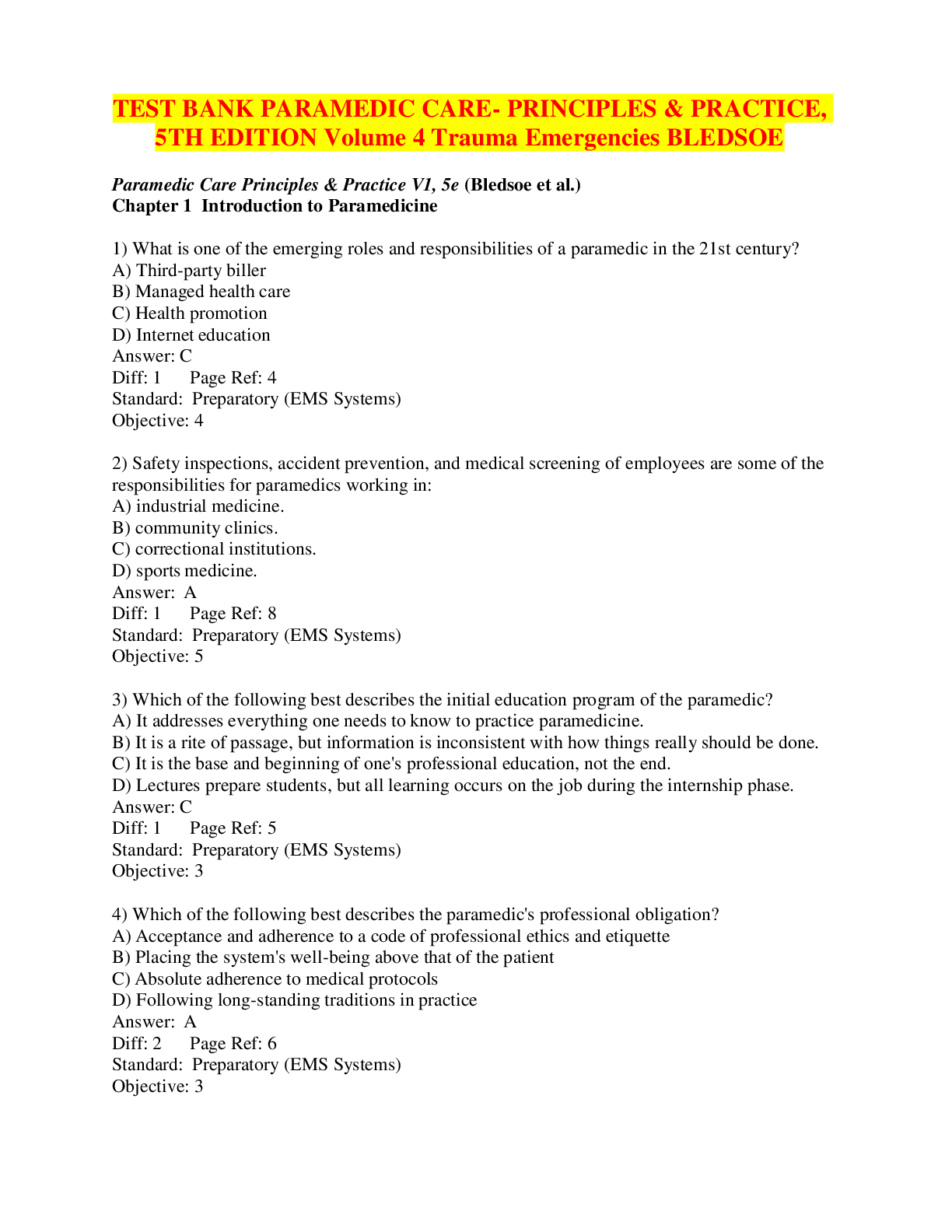
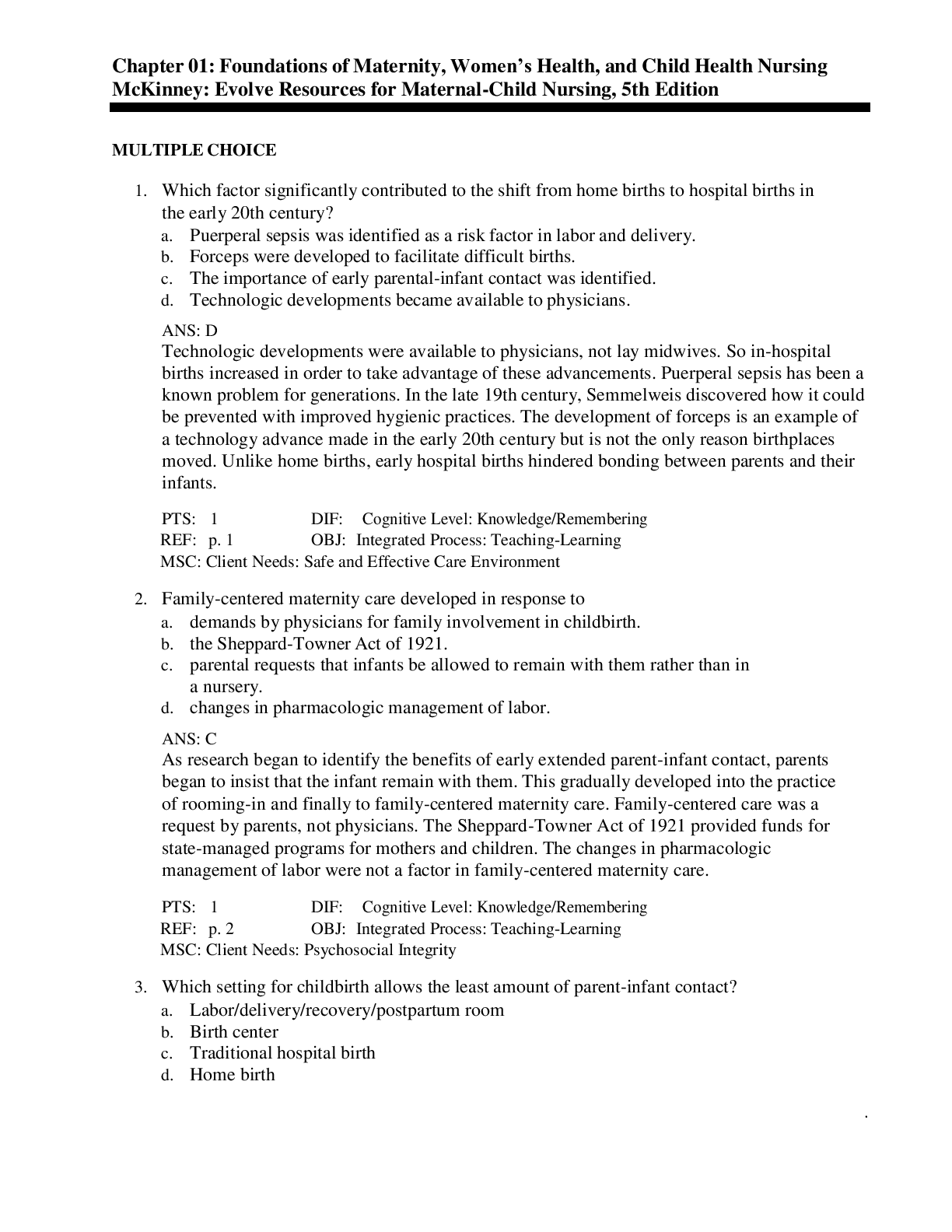


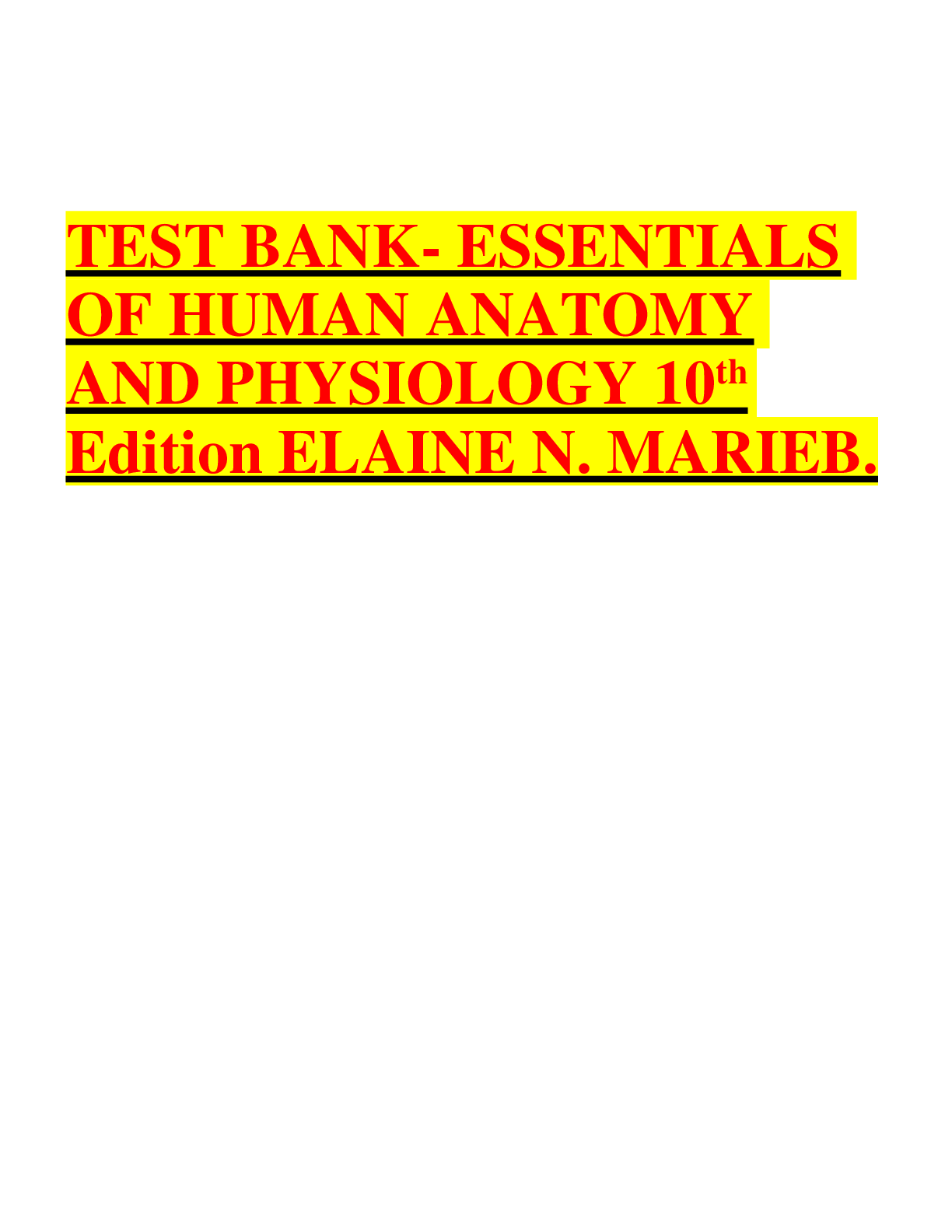


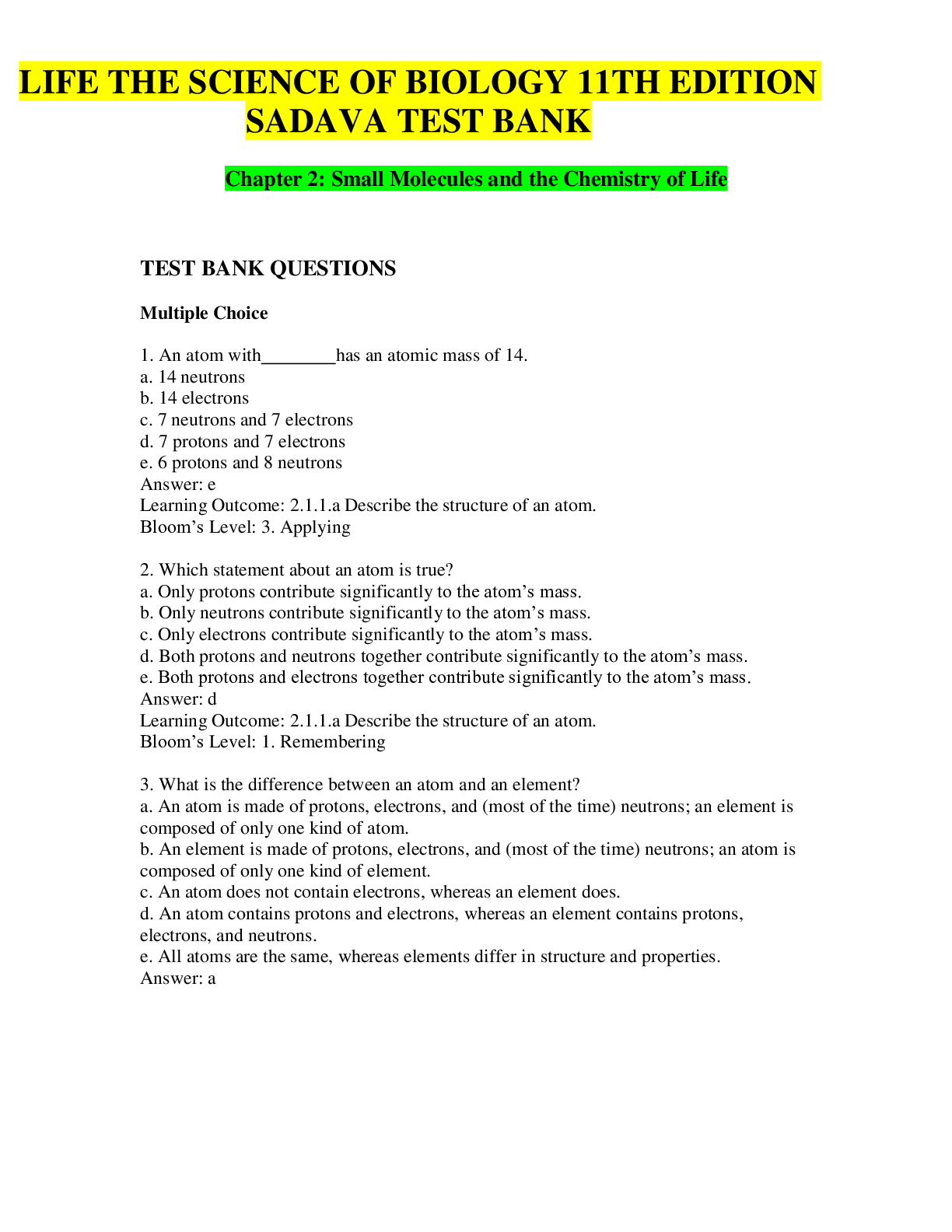
 Test Bank With Rationales.png)


